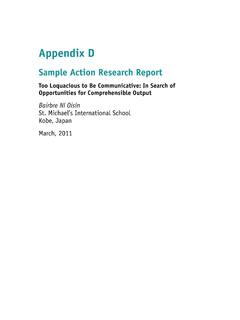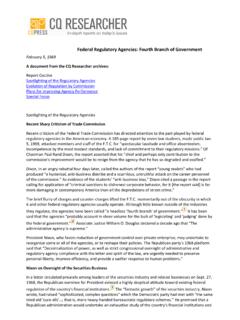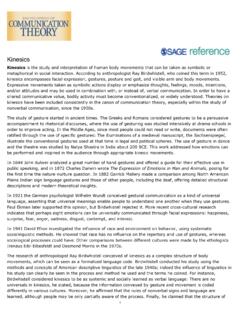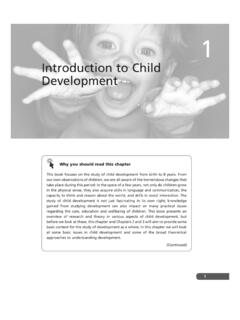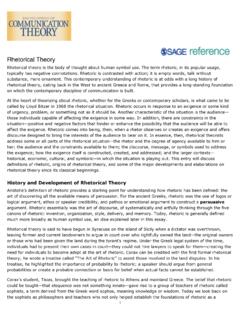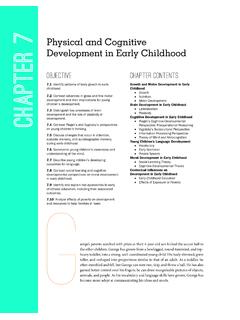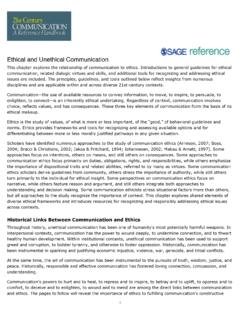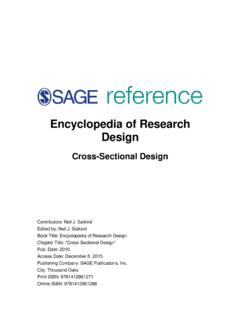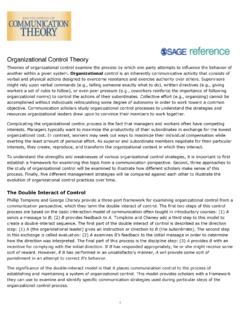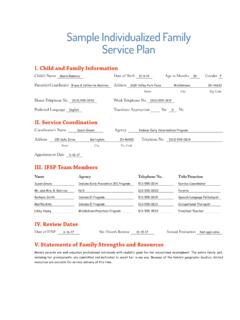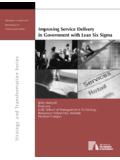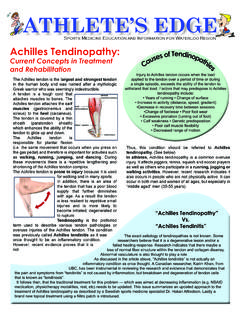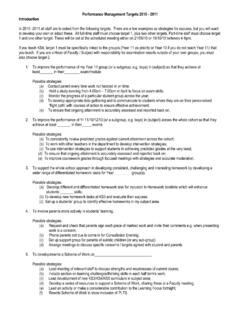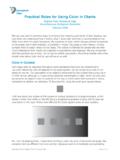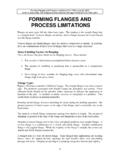Transcription of Sample Action Research Report - SAGE Publications
1 Sample Action Research Report 1. Effect of Technology on Enthusiasm for Learning Science Jane L. Hollis Lake City Middle School Lake City, Florida ABSTRACT. The effect of technology on students' enthusiasm for learning science (both at school and away from school) was investigated. Pre- and post-student and parent surveys, student and parent written comments, and teacher observations were used to record changes in enthusi- asm for learning science during a six-week study period. In this study, I investigated how the integration of technology into my middle school science curriculum would impact my students' enthusiasm for learning science.
2 Enthusiasm for learning science can be defined as the students' eagerness to participate in science activi- ties in the classroom, as well as away from school. My motivation for focusing on technol- ogy was twofold. First, I have had an interest in integrating technology into my students'. studies of science for some time. Secondly, the funding for technological equipment and software recently became available. During the 1993 1994 school year, my school was awarded a $115,000 incentive grant to purchase equipment and software and to train teachers in the use of this software and technological equipment.
3 One of the stipulations of the grant was that the equipment and software must be for student use. According to Calvert (1994), American education is a system searching for solutions. Our children drop out, fail to sustain interest in learning, and perform below capacity. Some have argued that television is the culprit. Others have argued that computers may be the answer. Today's middle school students have grown up in a technological world with television, electronic toys, video games, VCRs, cellular phones, and more. They are accustomed to receiving and processing information through multi-sensory sources.
4 I wanted to bring technology into my classroom and incorporate it into my science curriculum using multimedia computer presentations. Barbara ten Brink (1993) noted, .. students look to us [teachers] to prepare them for an increasingly technological world. Fortunately, with videodiscs, we are meeting the challenge by delivering curriculums in ways that engage, motivate, and thrill our students. In this study my students had an opportunity to use assorted multimedia technology as they explored a segment of a middle school science curriculum. THEORETICAL FRAMEWORKS.
5 Learning is an extremely complex human process. During my twenty-four years of teaching I have used many strategies to enhance student learning and to teach new concepts. I am still not convinced that I thoroughly understand how children learn. Yet, at this point, I do believe children learn through experiences. They build on past experiences and previous knowledge to process new concepts. As children redefine old understandings of concepts and integrate new experiences into their old concepts, they mature in their knowledge and understanding.
6 In their early experiences of the world pupils develop ideas which enable them to make sense of the things that happen around them. They bring these informal ideas into the class- room, and the aim of science education is to give more explanatory power so that their ideas can become useful concepts (National Curriculum Council, 1989). In a discussion in Discovery, Enquiry, Interaction, Constructive Learning What's the Difference? Harlen (1993) suggested that there is no single solution to the complex matter of education. According to Harlen, the objectives of learning are various and so should be the approaches to teaching.
7 A combination of approaches is often the most effective education. As a teacher I cannot assume that I am the giver of knowledge. I can only be confident in knowing that I am the facilitator of understanding, the presenter of an opportunity to explore, discover, and compile knowledge. A student's willingness to learn and his/her enthusiasm for discovering knowledge and developing understanding will dictate the level of student learning. Students need to be actively involved in their education. Interested and enthusiastic students are more willing learners, and I believe willing learners become active participants in their own instruction.
8 As children become more actively involved in their learning, they develop interest and enthusiasm for the content and/or the process that is their conduit for acquiring new knowledge. Through this study I hoped to find that multimedia technology would be the conduit that my students needed to acquire new knowledge, develop new concepts, and express strong understanding. Through the integration of multimedia computer software I hoped to tap the enthusiasm of my students towards learning science and make them active participants in their own instruction.
9 THE STUDY. I teach eighth grade, comprehensive science (an integrated life, earth/space, and physical science program) at a middle school in a rural North Florida county. I am a member of a four-teacher team, along with one math, one history, and one language arts teacher. We instruct 130 students who make up the academic team (Team E). Although I teach five science classes a day, I targeted my seventh period class for my Research . This class is made up of thirty-one average and above-average science students. I chose this last class of the day for purely logistical reasons.
10 With only one computer in my class- room, I needed to borrow eleven computers daily from neighboring teachers. Seventh period was the most agreeable period to the other teachers. An extra advantage of using the last period of the day was that students could return the computers after the final dismissal bell and not take valuable class time for this task. My data was generated by comparing these students' attitudes toward learning science at the beginning of the school year, during my study, and at the conclusion of the study period. The students' attitudes and reactions were documented by the students themselves, by their parents, and by my own observations.
